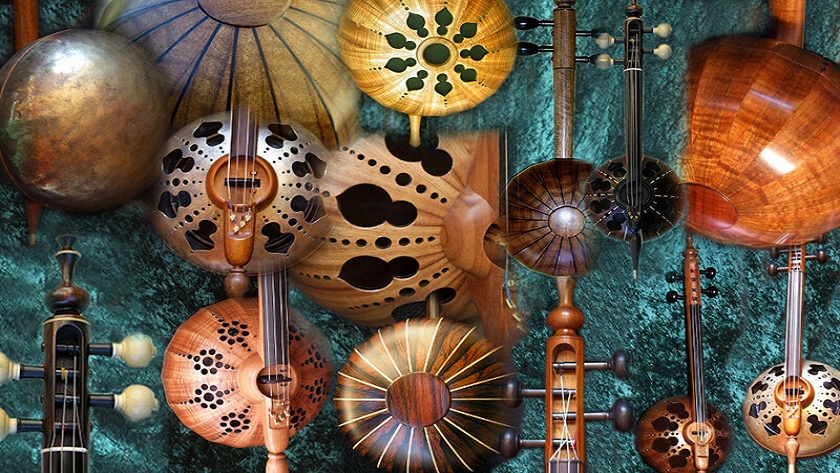Iran Press/ Iran news: Iranian traditional music is rich and holds a deep spiritual dimension. The tradition of Persian music dates back many centuries ago, and plenty of instruments have been created in Persia. Entering the world of Persian classical music is stepping into a world that arouses all the senses.
 Chehel sotoon palace painting depicts Kamancheh instrument
Chehel sotoon palace painting depicts Kamancheh instrument
Persian music history
Archaeological evidence shows that the development of music in Iran finds its origin in its first civilizations. Instruments, texts, and paintings testify to the emergence of musicians as far as the Elam civilization. Even if we have a few pieces of information about the tradition of music under the great Persian Empire of the Achaemenids, we know that it was already a central part of the court's life. In Iranian mythology, the glorious king Jamshid is credited for the invention of music.
Related article: Santur; What Iran is known for
It was during the Sassanid era that Persian music finds its authentic roots, and many documents from this period testify to its importance. Musicians are depicted, for instance, in several Sassanian bas-reliefs, such as Taq-e Bostan, in Kermanshah. At that time, music was not simple entertainment for the court but was seen as a way for men to communicate with God.
 Kamanche is made artistically in Iran
Kamanche is made artistically in Iran
Kamancheh
Persian Kamancheh (Kamanche or Kamancha) is a highly esteemed instrument of Persian music. It captures the listeners with its moving sound. Persian Kamancheh is used for light music (motrebi) and it is the only bowed string instrument in the classical tradition of Iran. It produces a soft, beautiful timbre and due to their technical possibilities, they can be used as a solo and also an ensemble instrument.
 Kamancheh is a popular instrument in Iran
Kamancheh is a popular instrument in Iran
Kamancheh's History
The oldest traces of the kamanche can be found in Farabi’s book, Musiqi al-Kabir. In this book, Farabi calls this instrument the rubab which has two strings. But, he does not deny the existence of a rubab with just one string as well. The rubab in fact is an Arabic name for the kamānche. The rubab which Farabi talks about it in his book is still played by many Arab musicians. Moreover, the kamānche is played from Turkey to the Central and East Asia.
 Persian miniature depicting Kamanche playing
Persian miniature depicting Kamanche playing
The strings are played with a variable-tension bow: the word "kamancheh" means "little bow" in Persian (kæman, bow, and -cheh, diminutive). It is widely used in the classical music of Iran, Armenia, Azerbaijan,Uzbekistan and Turkmenistan, with slight variations in the structure of the instrument.
 Kamancheh playing
Kamancheh playing
Kamancheh design
Traditionally kamanchehs had three silk strings, but modern ones have four metal ones. Kamanchehs may have highly ornate inlays and fancy carved ivorytuning pegs. The body has a long upper neck and a lower bowl-shaped resonating chamber made from a gourd or wood, usually covered with a membrane, made from the skin of a lamb, goat or sometimes fish, on which the bridge is set.
Related Article: Tombak instrument; What Iran is known for
From the bottom protrudes a spike to support the kamancheh while it is being played, hence in English the instrument is sometimes called the spiked fiddle. It is played sitting down held like a cello though it is about the length of a viola. The end-pin can rest on the knee or thigh while seated in a chair.
 Art of playing Kamancheh
Art of playing Kamancheh
Famous Iranian kamancheh players include Ali-Asghar Bahari, Ardeshir Kamkar, Saeed Farajpouri, and Kayhan Kalhor. Famous Azeri kamancheh player is Habil Aliev.
Read More:
Ney Instrument; What Iran is known for
Oud Instrument; What Iran is known for
Ashkan Salehian

